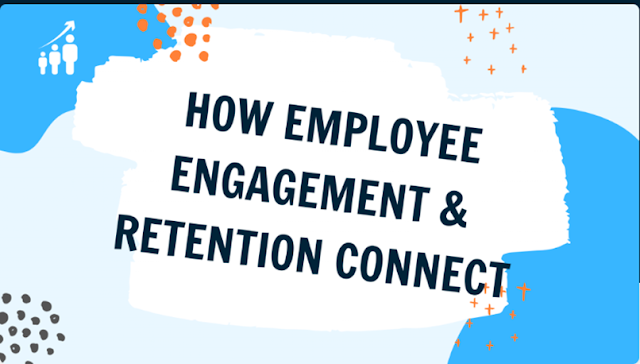Why Strategic Work Force Planning Is Must In Thriving Business Organization?
Workforce Planning is the
process of making sure the organization has the right number of people, in the
right jobs, and with the right skill set at the right time to accomplish current
and future business plans.”
“Positioned: Workforce Planning
That Gets the Right Person in The Right Job”
Dan L. Ward and Rob Tripp
(2013)
Strategic workforce planning is a systematic process aimed at
aligning an organization's human resources with its overall business strategy.
It involves analyzing current and future workforce needs, identifying skills
gaps, and developing strategies to ensure the right talent is available at the
right time. By anticipating future staffing needs, organizations can
proactively address challenges, such as turnover or skill shortages, and
optimize their workforce for maximum efficiency and productivity. Effective
strategic workforce planning enhances decision-making by providing insights
into workforce trends, enabling companies to allocate resources effectively,
and fostering a flexible and adaptable workforce that can respond to changing
market demands. Ultimately, this process contributes to the achievement of
organizational goals and sustained competitive advantage.
Strategic work force planning
Types of work force planning
Operational work force planning –
Focuses on skills & capabilities needed within the next
6 to 18 months.
Strategic work force planning -
Looks 3 – 5 years in the future &
anticipates new skills,
roles, & variables that cannot be
predicted but can be prepared for.
Strategic Work Force
Planning Model
Figure 03
1. Gap analysis
“Gap analysis helps identify the
gaps or discrepancies that exist between an organization's current performance
and its strategic objectives. It involves comparing the actual performance
metrics with the desired targets to determine the extent of the gaps.”
Key Importance’s of work force
strategic Analysis
1.Alignment with organizational goals: Workforce strategic planning ensures that the organization's human resources are aligned with its overall strategic objectives. It helps determine the skills, competencies, and roles required to achieve those goals.2. Talent acquisition and retention: Strategic planning enables organizations to identify their current and future talent needs. It helps in attracting and retaining high-quality employees by implementing effective recruitment and retention strategies.3. skills of the existing workforce. It identifies skill gaps and provides training and development opportunities to enhance employee competencies, ensuring a skilled and adaptable workforce.
4. Succession planning: By proactively identifying key positions and potential successors, workforce strategic planning ensures a smooth transition of leadership and critical roles. It helps organizations avoid disruptions and maintain continuity in operations.
5. Resource optimization: Strategic planning allows organizations to allocate resources effectively by matching the right talent to the right roles. It minimizes redundancy and ensures that human resources are utilized efficiently, leading to increased productivity and cost savings
References
1. Beames, C. How to Avoid The 12 Deadly Traps of Workforce Strategic Planning. CRF. 2014. https://www.crforum.co.uk/research-and-resources/how-to-avoid-the-12-deadly-trapsof-workforce-strategic-planning
2. Becker, B., Huselid, M., Beatty, R. The Differentiated Workforce: Transforming Talent Into Strategic Impact. Harvard Business School Publishing. Boston. 2010
3. Bordoloi S, Matsuo H (2010), ‘Human Resource Planning in Knowledge-intensive Operations: A Model for Learning With Stochastic Turnover’, European Journal of Operational Research, Vol. 130, pp. 169-189.
4. Mayo, A. Strategic Workforce Planning – A Vital Business Activity. Strategic HR Review Vol. 14 No. 5 2015, pp. 174-181
5. Moore, T., Bokelberg, E. How IBM Incorporates Artificial Intelligence into Strategic Workforce Planning. People + Strategy Journal. 2019.https://www.shrm.org/executive/resources/people-strategy-journal/Fall2019/Pages/moore-bokelberg-feature.aspx
6. Sullivan, J (2012a), ‘Why Workforce Planning is Hot’, Industry Trends, 29 July, www.erexchange.com/articles (29/10/2012)7. The Collaborative Community Strategic Workforce Planning Guidebook. Imagine Talent Consultancy. May 2020 http://imagine-talent.com/swp/GUIDEBOOK-MAY-2020.pdf













Strategic workforce planning should foster a flexible and adaptable workforce that can respond to demands. This process contributes to achieving organizational goals and achieving sustainable competitive advantage. Take a good message from this.
ReplyDeleteIt enables a company to react and adapt to certain market changes. very interesting blog brother...
ReplyDeleteGently emphasize the importance of workforce planning.
ReplyDeleteStrategic workforce planning is imperative for thriving business organizations as it aligns human resources with long-term goals. It ensures the right talents are in place, promotes agility, minimizes skill gaps, and optimizes resource allocation, leading to sustained competitiveness and growth
ReplyDeleteStrategic workforce planning enables HR to identify talent requirements associated with the business's future goals and develop a strategy to guarantee the organization has the correct mix of talent
ReplyDeleteGot knowledge about Strategic workforce planning in aligning human resources with business strategy, fostering skill development, optimizing resources, and ensuring long-term organizational success.
ReplyDeletesolid strategic planning is crucial for any organization.it helps organizations stability.
ReplyDeleteIn essence, strategic workforce planning is a cornerstone for thriving businesses. It aligns the organization's people strategy with its overall business strategy, ensuring agility, resilience, and sustained growth in a competitive environment.
ReplyDelete